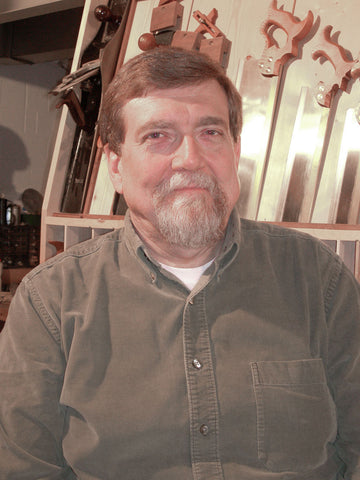From Truths to Tools
by Jim Tolpin and George Walker
illustrated by Andrea Love
You can download an excerpt from this book here. Learn more about artisan geometry and the other books in this series here.
Good books give you a glimpse of small truths – about workbenches, joinery or sharpening, for example. Great books, on the other hand, stitch together seemingly disparate ideas to present a new way of looking at the whole world, from your marking awl, to your hand or to the line of the horizon.
“From Truths to Tools” is a hand-illustrated work that masquerades as a children’s book. There are funny drawings. There aren’t a lot of words. You can read the entire 208-page book in one sitting.
But “From Truths to Tools” somehow explains the craft, the entire physical world, our language and geometry in a way that makes you feel like the authors have revealed a huge secret to you. One that has been sitting in front of you your entire life.
The book begins with an explanation of a circle and a single point, and it then shows how those simple ideas can be used to create an entire set of layout tools – a try square, a straightedge, dividers etc. that allow you to build furniture.
Once you understand the language behind your tools, very complicated things become easy to understand. Compound joinery. Fitting odd miters. Making curves that taper.
And once you get those ideas in your head, it’s a short hop to grasp how those same ideas can be applied to building anything of any shape imaginable – skyscrapers, boats, bridges. When you can calculate if a tree will hit you when you fell it in the forest, you’ll be able to calculate the circumference of the earth.
“From Truths to Tools” is the third book from the geometry-loving team of Jim Tolpin and George Walker. Their first book, “By Hand & Eye,” makes the case that simple whole-number ratios are the underpinning to the built world and our furniture. Their second book, “By Hound & Eye,” gives you the exercises that open your eyes to the way geometry and ratios govern our world. And the third, “From Truths to Tools,” shows how geometry creates our tools and, once understood, leads to a deeper grasp of the things we build, the world around us and even our language. They also are the authors of “Good Eye” and “Euclid’s Door”.
Contents
Introduction 1
The Awl 8
Dividers 13
Rulers 16
Story Sticks 21
Compass 27
Spiling Batten 34
Bending Battens 47
Marking Implements 49
Plane Generators 58
Gauges 69
Squares 95
'Smart' Square 108
Plumb Line 117
Libella 122
Center Finder 128
Sector 136
Proportional Dividers 141
Scale of Chords 145
Protractor 149
Large-Scale Layout Tools 155
The Triplet 157
Carpenter's Ten-Foot Pole 160
Thirteen-Knot Cord 164
Cord of Polygones 168
Groma and Merchet 172
Cords of Magnitude and Angle 175
Chorobate 179
Cross Staff 182
Logger's Felling Gauge 186
Appendix 191
Epilogue 193
About the Authors

George Walker
Raised in northeast Ohio, George Walker spent the first 20 years of his woodworking in design purgatory. Then after stumbling onto the design language of the artisans, he can’t shut up about it. After four books (and working on a fifth with Jim Tolpin), and scores of magazine articles, he’s just getting started. No matter how ordinary the circumstances, George is regularly struck by the majesty and wonder of life – the way millions of colorful warblers gather at Magee Marsh before their migration across Lake Erie; the way a medieval drawing found in an old monastery can inform his work through the understanding of geometry; or the way he can now build a beautiful piece of furniture, without plans or a tape measure, using instead a stick, a piece of string and dividers. Visit George and Jim’s By Hand & Eye’s online atelier (design studio) to help you unlock your potential as a builder or maker by honing your design skills.
Read more about George in our full profile.

Jim Tolpin
Jim Tolpin, who grew up on the East Coast and now resides in Port Townsend, Washington, has been making a living at woodworking since 1970, mostly in the finish carpentry and custom cabinetmaking trades. In the last 15 years he's been writing books on woodworking and design and, after helping found Port Townsend School of Woodworking, teaching the trade. Jim is, above all else, a teacher, and the best kind, because he never believes he knows it all and never stops learning. He also believes in passing it on, while you still can. “There are a lot of people out there who want to know this stuff and that includes me,” he says. “I personally love being in the position of not knowing but maybe going to find out.” Visit Jim and George’s By Hand & Eye’s online atelier (design studio) to help you unlock your potential as a builder or maker by honing your design skills.
Read more about Jim in our full profile.






